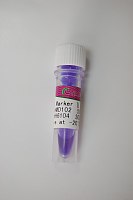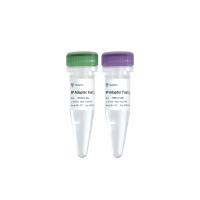In Situ DNA Ligation as a Method for Labeling Apoptotic Cells in Tissue Sections: An Overview
互联网
368
In 1992 Gavrieli et al. published a seminal article showing that apoptotic cells could be detected by an in situ assay (1 ). The labeling method depends on the ability of terminal deoxyribonucleotidyl transferase to add nucleotides to breaks in DNA, and has generally been termed TUNEL (terminal dUTP nick end labeling), although ISEL (in situ end labeling) would be a more appropriate description. During the late stages of apoptosis, nucleases are activated that cleave DNA with the production of double-strand breaks. Terminal transferase is used in this in situ assay for apoptosis to add labeled nucleotides to the 3′ ends of DNA molecules, thus providing a sensitive assay for detecting apoptotic cells in tissues. Since the publication of this method, this work has been cited in over 4,300 publications, attesting to the usefulness of the assay.









